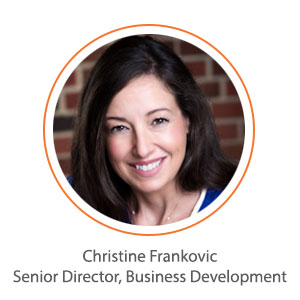 The 505(b)(2) drug development path, in contrast to traditional development of a new, never been approved drug (described under 505(b)(1) of the Federal Food, Drug, and Cosmetic Act) or ANDA (described under Section 505(j) of the Act) for a generic drug that is no longer under patent protection, is an abbreviated or hybrid path of regulatory approval in the US. It’s increasingly used by both generic companies and innovators as well as “specialty” pharma companies to improve patient compliance, reduce pill burden, and improve safety or efficacy as compared to the original marketed product. Examples (not a complete list) include prodrugs, combination products, liposomal, encapsulated or cochlear formulations, drug-device combinations, transdermal creams and gels, patches, sublingual, and implants. Relying on the safety and efficacy data in the original innovator NDA filing, 505(b)(2) drug programs treat the same patient population, but may offer significant advantages over the original formulation.
The 505(b)(2) drug development path, in contrast to traditional development of a new, never been approved drug (described under 505(b)(1) of the Federal Food, Drug, and Cosmetic Act) or ANDA (described under Section 505(j) of the Act) for a generic drug that is no longer under patent protection, is an abbreviated or hybrid path of regulatory approval in the US. It’s increasingly used by both generic companies and innovators as well as “specialty” pharma companies to improve patient compliance, reduce pill burden, and improve safety or efficacy as compared to the original marketed product. Examples (not a complete list) include prodrugs, combination products, liposomal, encapsulated or cochlear formulations, drug-device combinations, transdermal creams and gels, patches, sublingual, and implants. Relying on the safety and efficacy data in the original innovator NDA filing, 505(b)(2) drug programs treat the same patient population, but may offer significant advantages over the original formulation.
As a bioanalytical lab, one could argue that we just “measure the drug.” Over the years, an increasing number of our small molecule programs have been in support of orphan and 505(b)(2) path drugs. Many of our customers are not Bioanalytical experts (CEOs, COOs, Clinical Operations, Formulators). We offer advice on pitfalls to avoid or be aware of when approaching the initial planning of these drug development programs. Although the 505(b)(2) path has been around since the mid 1980’s, it was in the mid-2000’s that KCAS’ business shifted from supporting a large number of “true” generic programs to more innovator programs. That shift coincided with the market demand. Excellent products were on the market that were still under patent, so pharma started shifting their focus from creating the “next blockbuster” to repurposing and improving older compounds. This being a less expensive and faster way to a revenue-generating, marketed product for their investors, while also offering alternatives for patients that, for one reason or another, the original marketed product didn’t suit. Today, over 50% of NDA submissions are 505(b)(2) drugs, and that percentage is expected to rise.
Built much during our generic drug development days, clients often come to us because we have an incredibly long assay list. We’ve either had direct experience with the drug(s) or a similar compound in the same class, even if it’s an “ancient” drug validated on an outdated platform. The beauty of the 505(b)(2) path is even very old drugs (e.g., thalidomide) that are not practical, safe, or sexy to market in their initial form, are ripe for reinventing and for correcting the safety and/or efficacy concerns.
Dynamic Range
When talking with a customer about a new program, one of our first discussion points to explore is the target analytical range. The FDA insists a validated (regulated) bioanalytical assay neatly “hug” the expected analytical range of samples collected in a GLP study. Too many samples requiring dilution to come within range raise questions. Studies with sample values bunched at either the high or low end of the curve also raise questions. In some cases, getting it wrong requires re-validation of the assay – an expense that can be tough to swallow, and in most cases is avoidable. KCAS prefers to start working with a customer on non-regulated nonclinical animal studies so we can develop the assay and see sample analysis results to accurately get a sense of how the drug performs in the lab and in the new formulation/route of administration in the animal model. If that’s not possible – say, the client’s already performed the non-GLP studies or there’s little pre-existing data to use – our Senior Scientific Advisor conducts a robust review of the available literature and we spend an appropriate amount of time discussing and consulting with our clients to arrive at a suitable target range. There are always surprises, but we do our best to tackle this from the get-go so, as the program progresses, the subsequent validations in new species require only minor tweaks to improve the assay performance or the range. The assay is customized for the client’s formulation so we can swiftly and efficiently analyze samples with little risk of failed batches or regulatory questions.
Speed and Efficiency
A large percentage of the LC-MS/MS work we do is in support of 505(b)(2) programs and the similar animal health programs reformulating human drugs for production and companion animals (submitted to the CVM division of the FDA). Because of the number of programs we support and the lengthy list of drugs and classes of compounds we’ve worked with in the 40 years of operations, we can act quickly to evaluate, consult and complete method development efficiently. We also have a lot of experience working in interesting matrices other than plasma. Frequently, tissue sampling may be needed from dermal applications or implant drug/device combos. You can read more on our tissue experience for small molecule.
Clients appreciate the fact we are an independent bioanalytical lab, well versed in the entire drug development timeline: non-GLP preclinical studies to GLP IND-enabling to Phase I – III clinical trials. They don’t need to change labs as the drug program progresses from concept to NDA. For large, international studies KCAS can also provide PK/PD collection kits to ensure samples are collected correctly and efficiently.
Some come to KCAS with the assumption that the bioanalytical assay is no big deal and expect to use the off-the-shelf already validated assay range. And in some cases, it isn’t wrong – as long as your target AUC/Cmax is the same as the marketed product and you’re only evaluating plasma samples. But if it’s anything more complicated than a “mostly the same as the generic” you are well advised to take the bioanalytical assay very seriously and work with a company well-versed in the space. It can save you money and time in the long run.
Ready to get started? First, check our method list. If you don’t see the drug you’re intending to work with, give us a call. Over the years, we’ve worked on approximately 6,000 compounds, and it’s very likely we’ve worked with the drug, or a similar compound.

